Is an Art Movement That Reduced Art to the Bare Essentials
On view
Floor 7
Date
1930
Classification
Paintings
Medium
Oil on sheet
Dimensions
Overall: 35 three/sixteen × 60 1/4in. (89.4 × 153 cm)
Accession number
31.426
Credit line
Whitney Museum of American Art, New York; purchase, with funds from Gertrude Vanderbilt Whitney
Rights and reproductions
© Heirs of Josephine N. Hopper/Licensed by Artists Rights Gild (ARS), New York
Early Lord's day Morning is 1 of Edward Hopper'southward nigh iconic paintings. Although he described this work as "almost a literal translation of Seventh Avenue," Hopper reduced the New York City street to bare essentials. The lettering in the window signs is illegible, architectural ornament is loosely sketched, and human being presence is merely suggested past the diverse curtains differentiating discrete apartments. The long, early on morning shadows in the painting would never appear on a north-south street such as Seventh Avenue. However these very contrasts of light and shadow, and the succession of verticals and horizontals, create the charged, almost theatrical, atmosphere of empty buildings on an unpopulated street at the offset of the day. Although Hopper is known equally a quintessential twentieth-century American realist, and his paintings are fundamentally representational, this piece of work demonstrates his emphasis on simplified forms, painterly surfaces, and studiously synthetic compositions.
Visual Description
Early Sunday Morning time is a horizontal oil painting on canvas. It is 3 feet tall and 6 feet wide, so it is twice as wide every bit it is tall. It shows a block of three fastened buildings, all two stories tall, with shops on the street level and apartments to a higher place them. The buildings extend horizontally across the painting from the left edge to the correct edge. You see them as if you're standing across the street from them.
Above all the buildings is a strip of blueish sky, darker blueish on the left, condign lighter and tinged with yellow toward the right side of the painting. Below the buildings is a sidewalk, a curb, and a thin slice of the street. The sidewalk, curb, and street too run from one edge of the painting to the other.
The buildings are in New York City, but Hopper leaves out details similar street signs. So information technology could exist any Chief Street, in whatever small boondocks in the Usa, during the eye decades of the twentieth century. There's nothing living or natural in this painting. No people, pets, birds, flowers or trees, though in that location are hints of human being activity in the apartment windows above the stores. And the sunlight is potent.
Near a 3rd of the fashion in from the left there is a fire hydrant on the sidewalk. And slightly right of eye on the sidewalk there is a barber'southward pole with red, white, and blue diagonal stripes. Except for the barber's pole, there is no way to know the business organization of the stores. The storefront windows have lettering on them, but y'all tin can't make out the words. The storefronts on the left and in the center are painted green and have rolled up awnings to a higher place their windows. The store on the right is painted blood-red.
The 2nd floor above all the stores is painted deep brick red. There are x apartment windows, all the aforementioned size, stretching beyond the stores beneath. Some windows are open up, some have yellowish shades pulled down to differing lengths. Some windows take dark window coverings. A few have white defunction. In this small particular, Hopper makes usa acutely aware that people are missing from the moving picture.
The sunlight on the buildings is very brilliant, and it is shining into the painting from the correct. You can tell by the shadows. Both the barber's pole and the fire hydrant cast long, night shadows to the left, as they block the sunlight coming from the right. The length of these shadows shows that the sun is nevertheless rising and low on the horizon. It's the sunlight and the absence of people that suggest the time is early on forenoon and that the day of the calendar week is Sunday, when few people are outside working or shopping.
Videos
-
Edward Hopper, Early Lord's day Morning | Video in American Sign Language
-
Hopper on the High Line
-
Jennifer Tipton on Edward Hopper
-
Edward Hopper'south New York: A Walking Tour
-
Mod Life: Edward Hopper and His Time
Audio
-
0:00
Edward Hopper, Early Sunday Morn, 1930
0:00
Art Spiegelman: Hopper'southward a regionalist and I've always liked the American regionalists like Reginald Marsh and Grant Woods. Simply the region that Hopper occupies is basically the desolate inner landscape of America.
And in Early on Sunday Morn, I as well was aware of how thoroughly related this is to my medium, comics. You know the word comics is kind of a misnomer and in Portuguese, I've discovered, they are called quadrenos, little boxes. And basically Hopper's a painter of little boxes. He takes his lilliputian box, he subdivides information technology into other boxes.
So I recollect of Early Lord's day Morning equally a comic strip earlier the Lord's day sun comes upwards. The boxes earlier they're fully inhabited. Some people sleeping, some people just sort of brushing their teeth, at best. The stores not activated and therefore total of a kind of sorry potential.
It looks like the barbershop pole is sort of already tipping its bulb to the little burn hydrant. It's kind of like the CP3O and R2D2 of 1930. This kind of mechanized urban, but very alive, possibly equally least equally alive as the people living behind those windows might be creatures.
And it kind of makes a mournful vocal, even though it's morning.
-
0:00
Edward Hopper, Early Sun Morning, 1930
0:00
Narrator:All yous're looking at here is a block of brick storefronts with apartments above them. The title, Early on Dominicus Morning, may explain the emptiness of the street, just information technology can't explain the emotional pull of the painting.
When Edward Hopper made this paradigm in 1930, he based it on a real street he knew—Seventh Artery South in Greenwich Hamlet. But he'due south made it look like any main street in any small boondocks anywhere in America. Notice the storefront windows. They have lettering on them, yet Hopper doesn't let you make out what the letters say. Hopper is an artist of universals, not particulars; he doesn't want to be that specific.
At present wait upwardly at the windows on the second floor. Begin at the left. A yellowish shade is drawn; another is half raised; farther forth, some of the windows are covered with darker window coverings; to the right, a few more than have decorative defunction. Each is slightly different, hinting at a life being lived beyond our view. In this small-scale detail, Hopper makes the states acutely aware that the people are missing from the picture. As a result, the painting communicates a sense of loneliness.
At the upper correct corner of the canvas, a small nighttime rectangle rises higher up the edifice—the suggestion of a skyscraper in the background. It doesn't catch your eye at start, only in one case y'all notice it, the tall building changes the whole picture. A threat overshadows the otherwise placidity street. Sooner or later the juggernaut of commerce and applied science will eradicate a small-town fashion of life.
-
0:00
Edward Hopper, Early Sun Morning, 1930
0:00
Art Spiegelman: Siempre me han gustado los regionalistas estadounidenses como Reginald Marsh y Grant Wood. Pero la región que ocupa Hopper es, básicamente, el paisaje desolado del interior Estados Unidos.
En Early Lord's day Morning , también tuve en cuenta la estrecha relación que esto mantiene con mi medio, el cómic. Como ustedes saben, la palabra cómic en cierto sentido es poco apropiada; he descubierto que, en portugués, se los llama quadrenos, o cajitas. Y Hopper es, básicamente, united nations pintor de cajitas. Toma su cajita y la subdivide en otras cajas.
Así que yo entiendo Early Sun Morning como una tira cómica que plasma el momento anterior a que salga el sol el domingo. Las cajas anteriores están completamente habitadas. Algunos duermen, otros quizás se estén lavando los dientes, como mucho. Las tiendas no están activas todavía y, por lo tanto, rebosan de united nations potencial triste.
Pareciera que el poste de la barbería ya está inclinándose hacia la pequeña boca de incendio. Ambos son como el CP3O y el R2D2 de los años treinta. Este tipo de urbanismo mecanizado pero, a la vez, lleno de vida; posiblemente, tan lleno de vida como la gente que vive detrás de esas ventanas, que podrían ser criaturas.
Y, de alguna manera, compone una canción triste, aun cuando es por la mañana.
-
0:00
Edward Hopper, Early Sunday Morning time, 1930
0:00
Mark Joshua Epstein: Esta pintura se llama Early Sunday Morning time y fue realizada por Edward Hopper. ¿Qué les llama la atención sobre ella?
Estudiante ane:Pareciera que todo está cerrado, todas las tiendas y las ventanas están cerradas y no se ve a nadie en la calle.
Estudiante 2: Yo creo también que realmente parece una mañana porque las sombras son alargadas.
Estudiante 1: Muestra la quietud de la mañana cuando acaba de salir el sol y todo el mundo está todavía en la cama.
Estudiante two: Me preguntaba si… Creo que los letreros están borrosos a propósito para dejar que imaginemos qué tiendas serían.
Mark Joshua Epstein: Edward Hopper dijo que esta pintura estaba inspirada en una parte de la Séptima Avenida, que corre de norte a sur en Nueva York, y me pregunto: ¿alguno nota algo raro con respecto a las sombras?
Estudiante ane: Dado que el sol auction del este al oeste y que la calle corre de norte a sur, es algo raro porque pensaría que las sombras tendrían que estar horizontales y no verticales.
Mark Joshua Epstein: ¿Alguno de ustedes cree posible que esta pintura sea el resultado de una combinación entre observación e imaginación?
Estudiante 2: Yo creo que sí porque las sombras no son muy realistas… La pintura es como realista pero algunas cosas son casi extrañas.
-
0:00
Edward Hopper, Early Sunday Morning, 1930
0:00
Narrador: Todo lo que vemos aquí es una cuadra de frentes de ladrillo en la que hay tiendas a pie de calle y apartamentos en el primer piso. El título, Early on Dominicus Forenoon , podría explicar la calle vacía; sin embargo, no explica la tensión emocional que desprende la pintura. Discover más de cerca.
Cuando Edward Hopper creó esta imagen en 1930, se inspiró en una calle verdadera que conocía: la Séptima Avenida Sur de Greenwich Village. No obstante, le dio el aspecto que podría tener cualquier calle principal de cualquier pueblecito de cualquier rincón de los Estados Unidos. Fíjese en las vidrieras de las tiendas: tienen carteles. Sin embargo, Hopper no nos permite descifrar lo que dicen. Hopper es un artista de universales, no de particulares; no quiere ser específico.
Ahora fíjese en las ventanas del primer piso, comenzando por la izquierda. Una cortina amarilla está baja; otra, medio abierta; más hacia el centro, algunas de las ventanas están cubiertas con postigos más oscuros; a la derecha, otras más tienen cortinas decorativas. Cada ventana tiene algo ligeramente distinto y estas distinciones sugieren una vida que se desarrolla más allá de nuestro campo de visión. Con este pequeño detalle, Hopper nos hace muy conscientes de que no hay personas en la pintura y, como resultado, esta transmite una sensación de soledad.
En la parte superior derecha del lienzo, vemos un pequeño rectángulo oscuro que se eleva sobre el edificio: la sugerencia de un rascacielos en el fondo. En principio, no llama la atención, pero una vez que uno lo ve, el edificio alto cambia la escena por completo. Una amenaza ensombrece esta calle por lo demás tranquila. Tarde o temprano, el gigante que componen el comercio y la tecnología erradicará la forma de vida pueblerina.
-
0:00
Edward Hopper, Early on Sunday Morning, 1930
0:00
Mark Joshua Epstein: This painting is called Early Dominicus Morning and it was fabricated past Edward Hopper. What do you lot detect about information technology?
Student 1: Well, information technology looks similar everything is airtight, and all the shops and the windows are airtight, and it doesn't look like anybody is on the street.
Educatee 2: I think that it too really looks like a morning time considering of the way that the shadows are long.
Student 3: It shows the stillness of the morning when the sunday simply comes up, everybody is however in bed.
Student 4: I'k wondering if, I think the words were blurred on purpose to let you lot imagine what the shops would be.
Mark Joshua Epstein: Edward Hopper said that this painting was based on a part of Seventh Avenue, which is a due north-south Street in New York, and I'1000 wondering if anyone notices something funny about the shadows.
Student 1: When the sun rises similar eastward-due west and when the street's sky is north-south, information technology's kind of weird, because you think the shadows would be going horizontally rather than vertical.
Mark Joshua Epstein: Does anyone recollect it'due south possible that this painting is a event of a combination of observation with imagination?
Educatee i: I think yes because the shadows aren't very realistic. Information technology'due south like realistic but and then some things are similar a piffling scrap off, almost.
-
0:00
June 29, 2015
Adam Weinberg on Early Sunday Morning past Edward Hopper0:00
-
0:00
Edward Hopper, Early Sunday Morning, 1930
0:00
Carter Foster:I was able to place the edifice that Hopper was looking at that inspired the painting, through former photographs.
Narrator:Carter Foster is the Steven and Ann Ames Curator of Cartoon at the Whitney.
Carter Foster:What's interesting about the painting is how Hopper both stretched out the building and condensed it the same fourth dimension. It sounds paradoxical and it sort of is. Simply what he did was he added an extra bay, an extra window, so that sort of elongates the top of the structure. Only he also added another shop opening in the bottom function, and so that you get this compression. Yous get smaller doors and windows than were actually at that place.
He sets off that sense of compression with this very prominent barber pole, which I have to read as a stand-in for a human being, and mayhap a stand-in for Hopper himself, who was actually alpine and, in fact, by this time, baldheaded.
So you become this face-off between this solid, familiar but mundane building and this very brightly lit barber pole in this kind of masterful composition, possibly of which the main subject field is light and the style low-cal plays off the built urban surround.
Narrator:One of the nigh important details in Early on Sunday Morning is something you might not notice right abroad—the dark square in the upper right corner. A larger building was going up when Hopper was working on the painting. Its looming silhouette suggests the rapid urbanization and modernization that was transforming the urban center.
-
0:00
Edward Hopper, Early on Sunday Morning, 1930
0:00
Carter Foster:A building very much similar Early Sunday Morning time forms the background of Nighthawks. Early on Lord's day Morning represents daytime. Nighthawks represents dark.
Hither, the overarching subject thing would be times of twenty-four hour period and the passing of fourth dimension, day to night. It'southward likewise nearly retentivity and the way that the urban environment changes. I call back that nosotros can expect at the paintings together and they enrich each other and give us a larger context that Hopper was thinking about when he fabricated both works.
-
0:00
Edward Hopper, Early Sunday Morning, 1930
0:00
Carter Foster: Early on Sunday Morning was significant for this exhibition because in doing early on enquiry, I was able to place the building that Hopper was looking at that inspired the painting, through old photographs.
Narrator: Yous tin can see 1 of those photographs on your screen.
Carter Foster: What'southward interesting about the painting is how Hopper both stretched out the building and condensed it the aforementioned time. It sounds paradoxical and it sort of is. Just what he did was he added an extra bay, an actress window, so that sort of elongates the tiptop of the structure. But he besides added another shop opening in the bottom part, so that you lot get this compression. Y'all get smaller doors and windows than were actually there.
He sets off that sense of compression with this very prominent barber pole, which I have to read as a stand up-in for a homo being, and perhaps a stand-in for Hopper himself, who was actually tall and, in fact, by this time, baldheaded.
So you go this face-off between this solid, familiar merely mundane building and this very brightly lit barber pole in this kind of masterful composition, perhaps of which the main subject is light and the style calorie-free plays off the built urban environment.
Narrator: One of the most of import details in Early Sunday Morning is something you might not notice correct abroad—the dark square in the upper right corner. A larger building was going upwardly when Hopper was working on the painting. Its looming silhouette suggests the rapid urbanization and modernization that was transforming the city.
To hear more nearly Early Sun Morning time and its relationship to Nighthawks—the other painting in this room—please tap your screen.
Exhibitions
-
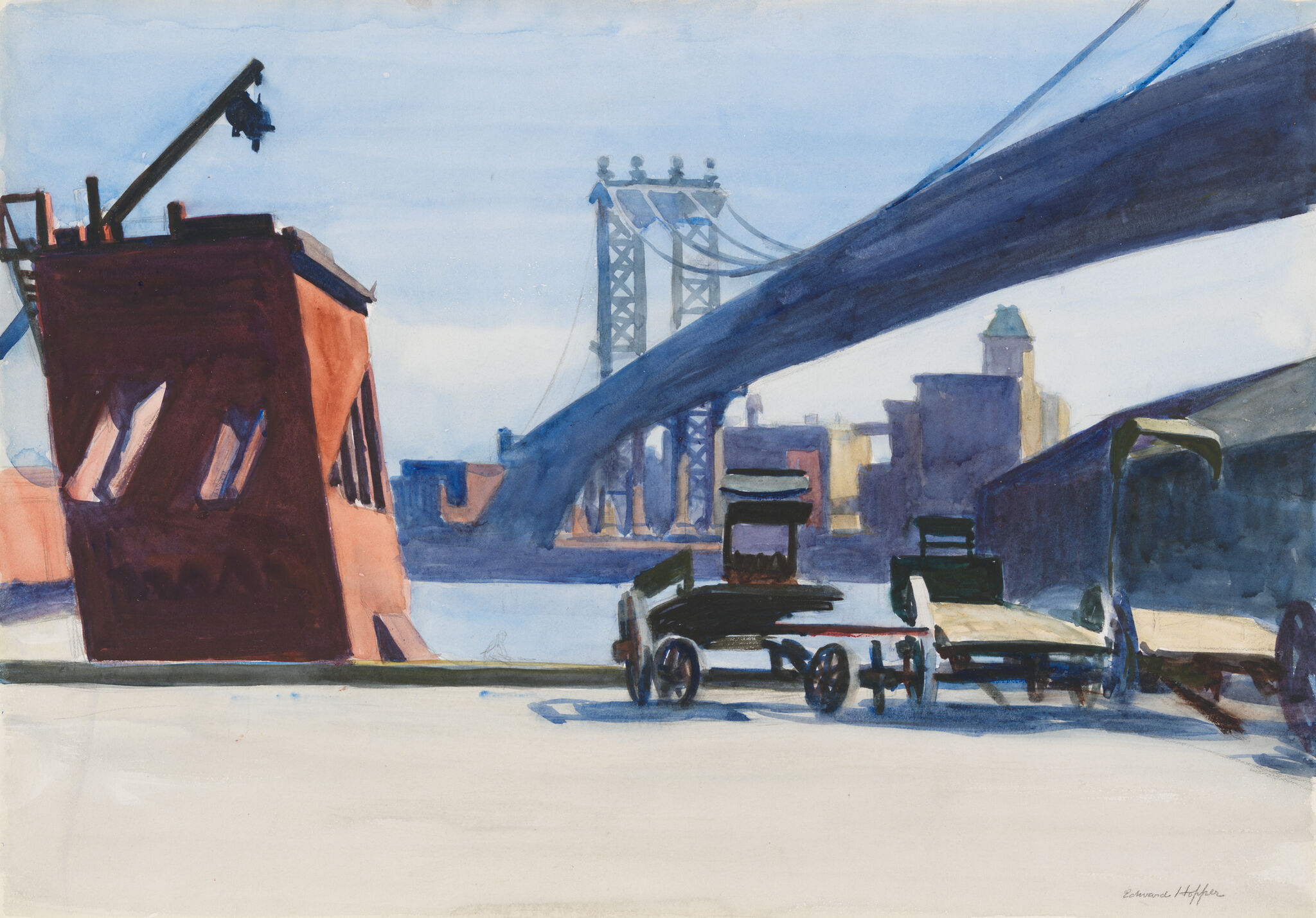
Edward Hopper's New York
Oct xix, 2022–Mar 5, 2023
-
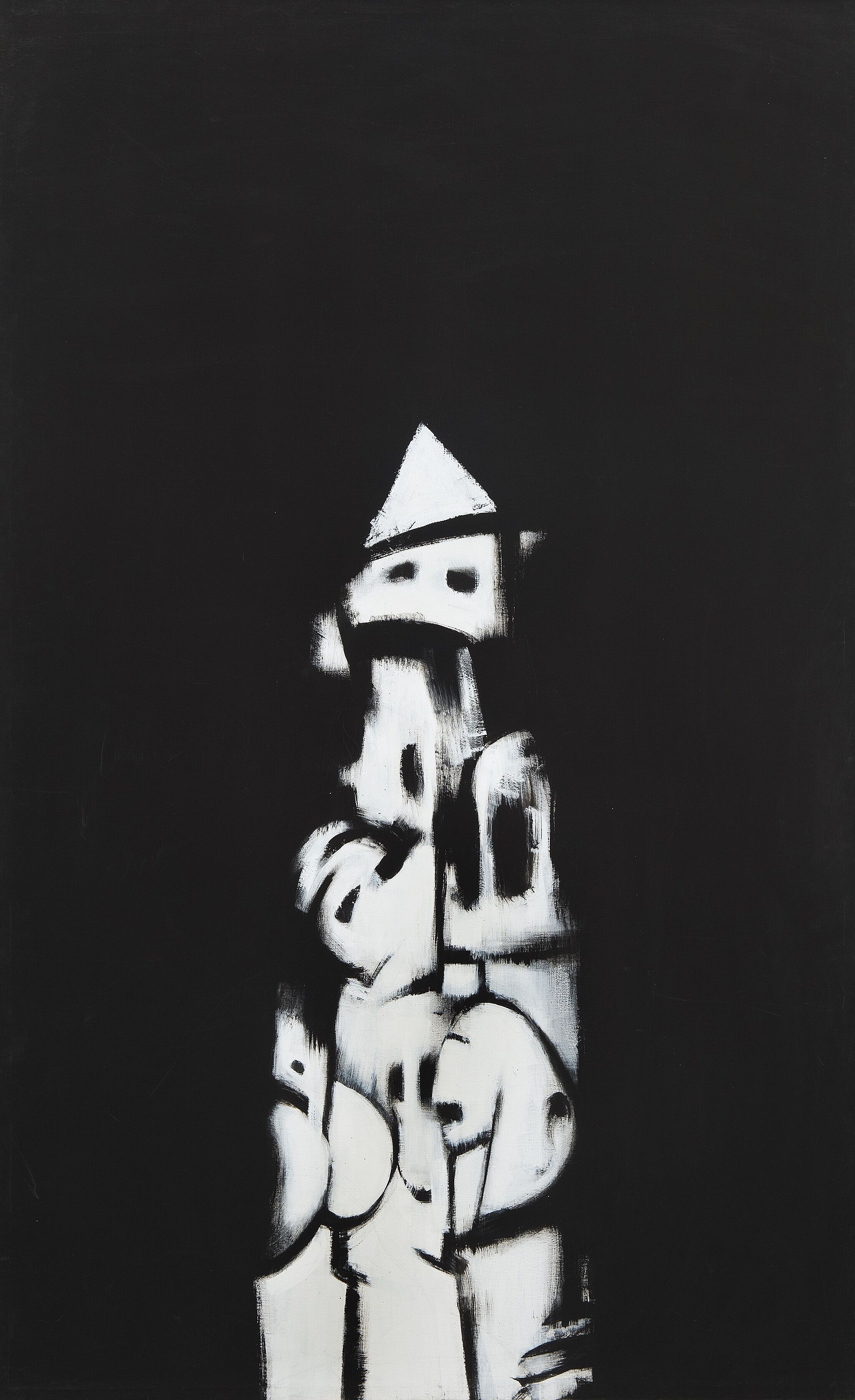
The Whitney'south Collection: Selections from 1900 to 1965
On view
-
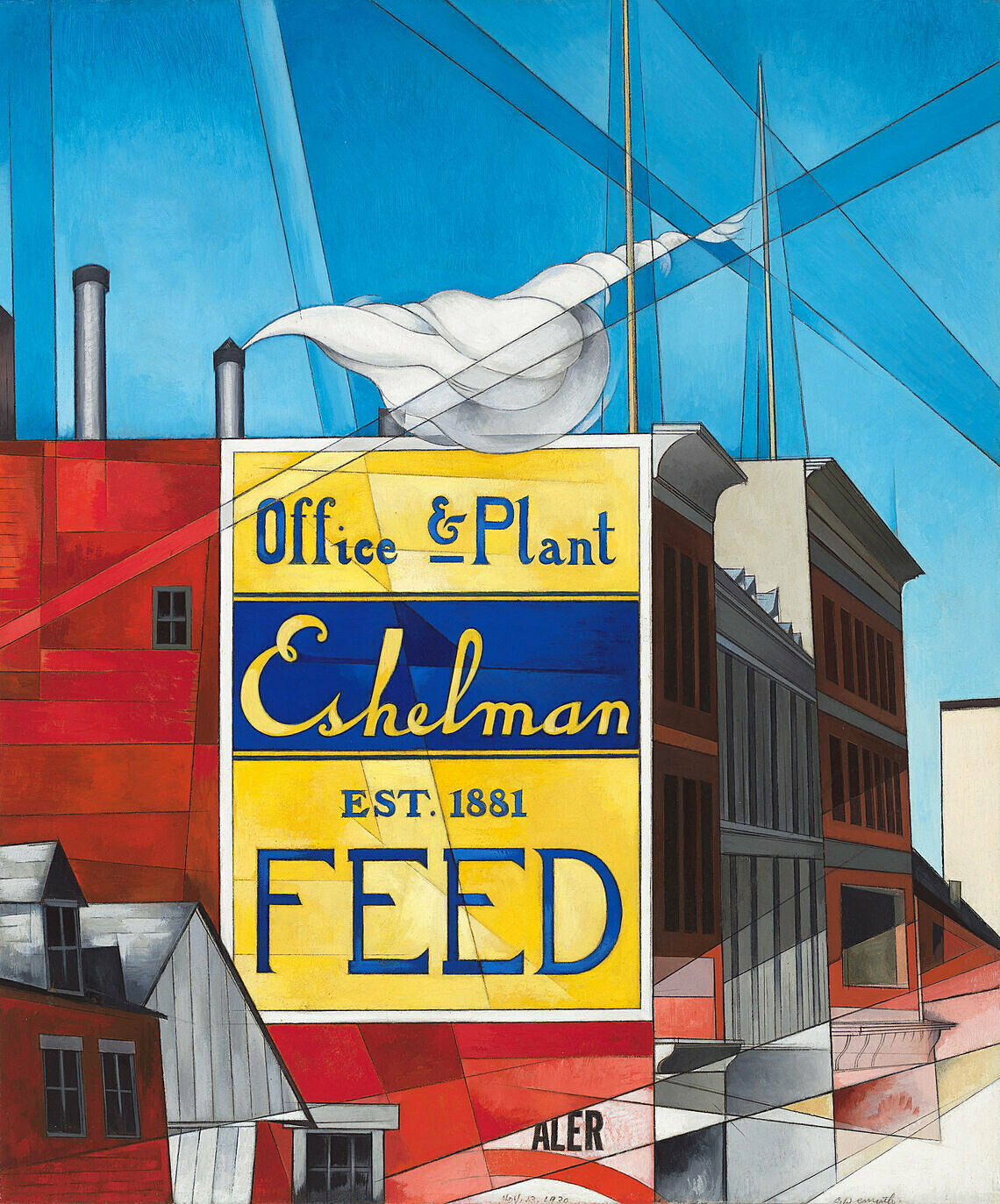
Where Nosotros Are: Selections from the Whitney'south Collection, 1900–1960
Apr 28, 2017–June ii, 2019
-
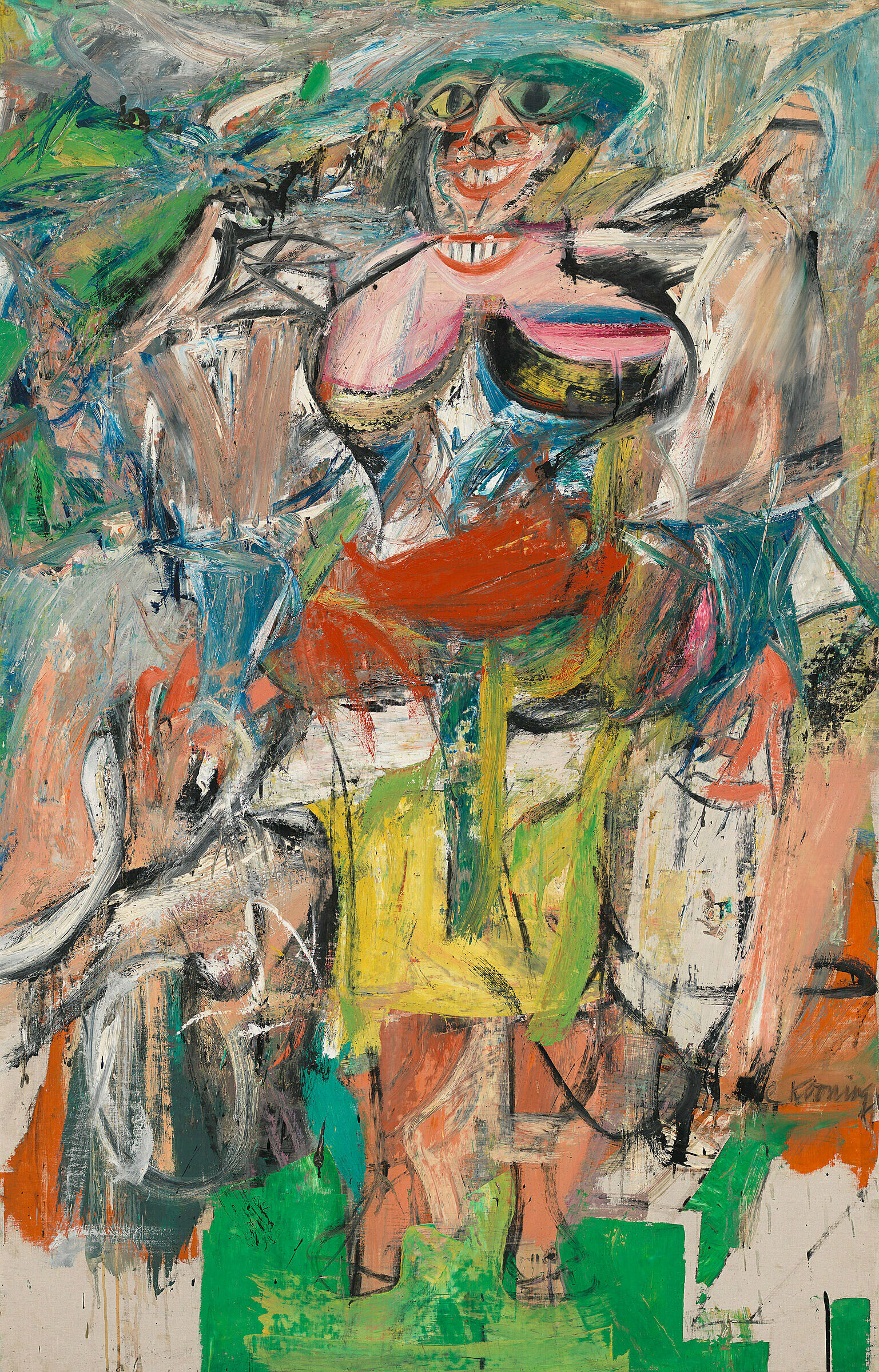
The Whitney'southward Collection
Sept 28, 2015–April 4, 2016
-

America Is Hard to See
May 1–Sept 27, 2015
-
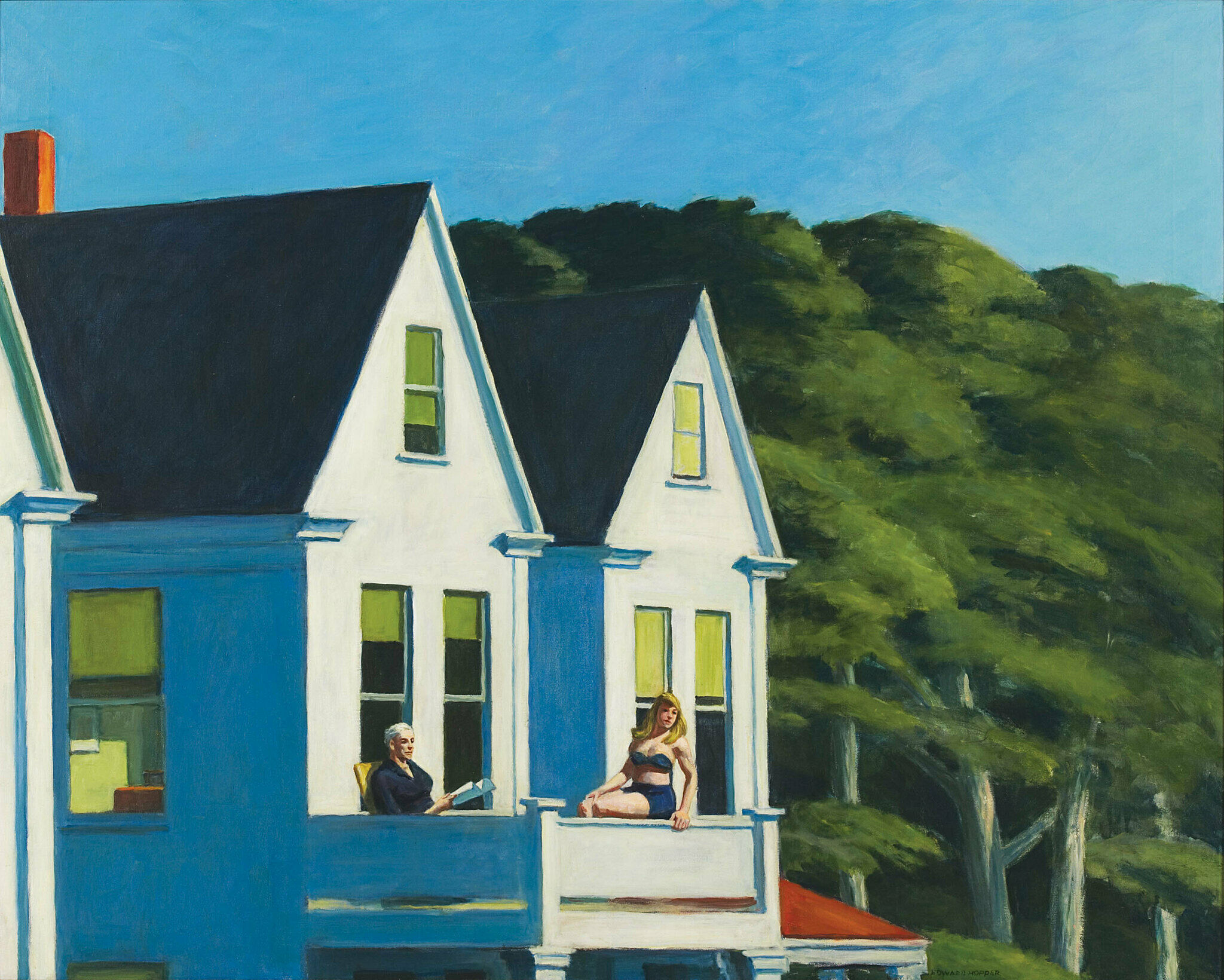
Edward Hopper and Photography
July 17–Oct xix, 2014
-
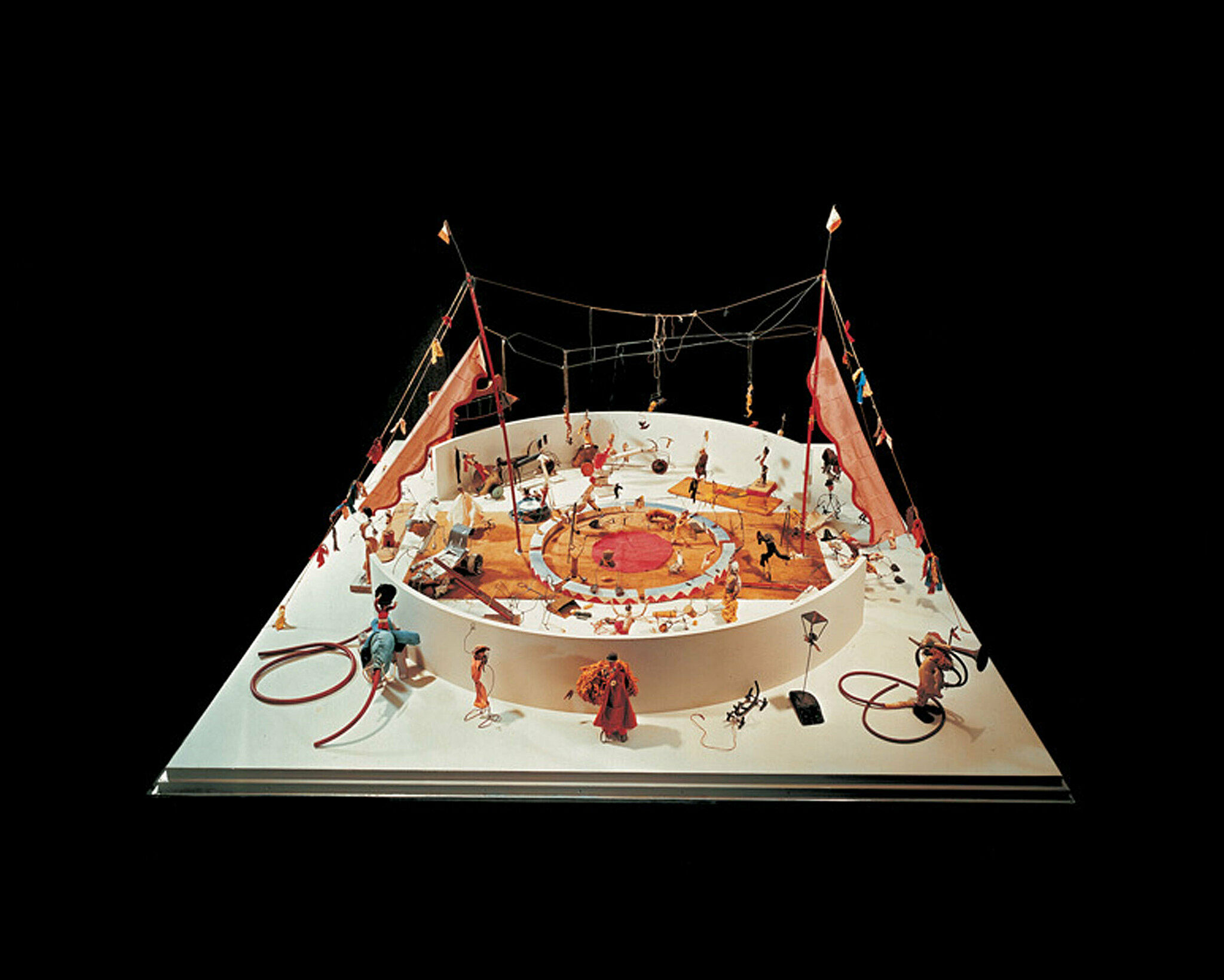
Collecting Calder
July 17–Oct 19, 2014
-
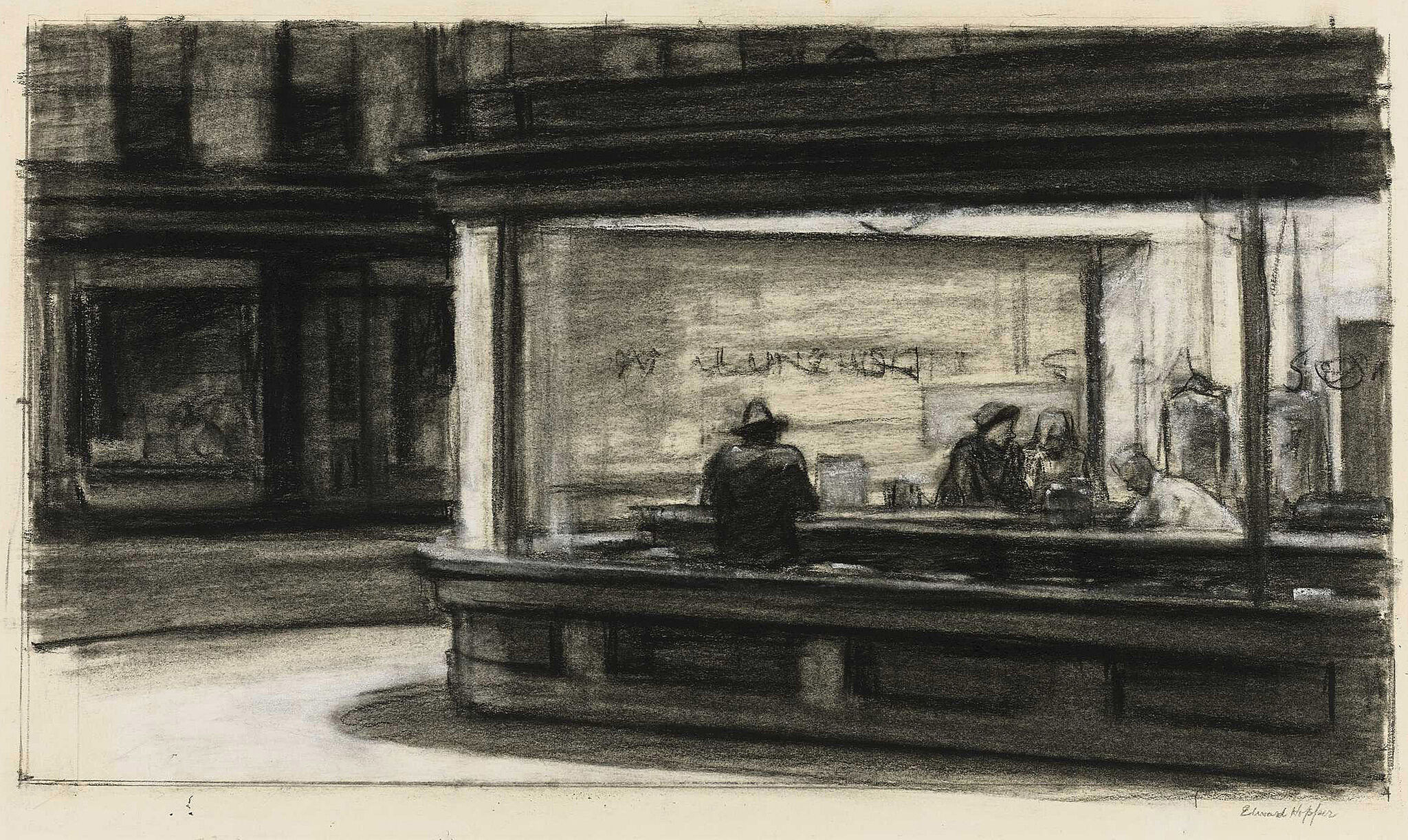
Hopper Cartoon
May 23–Oct half-dozen, 2013
-
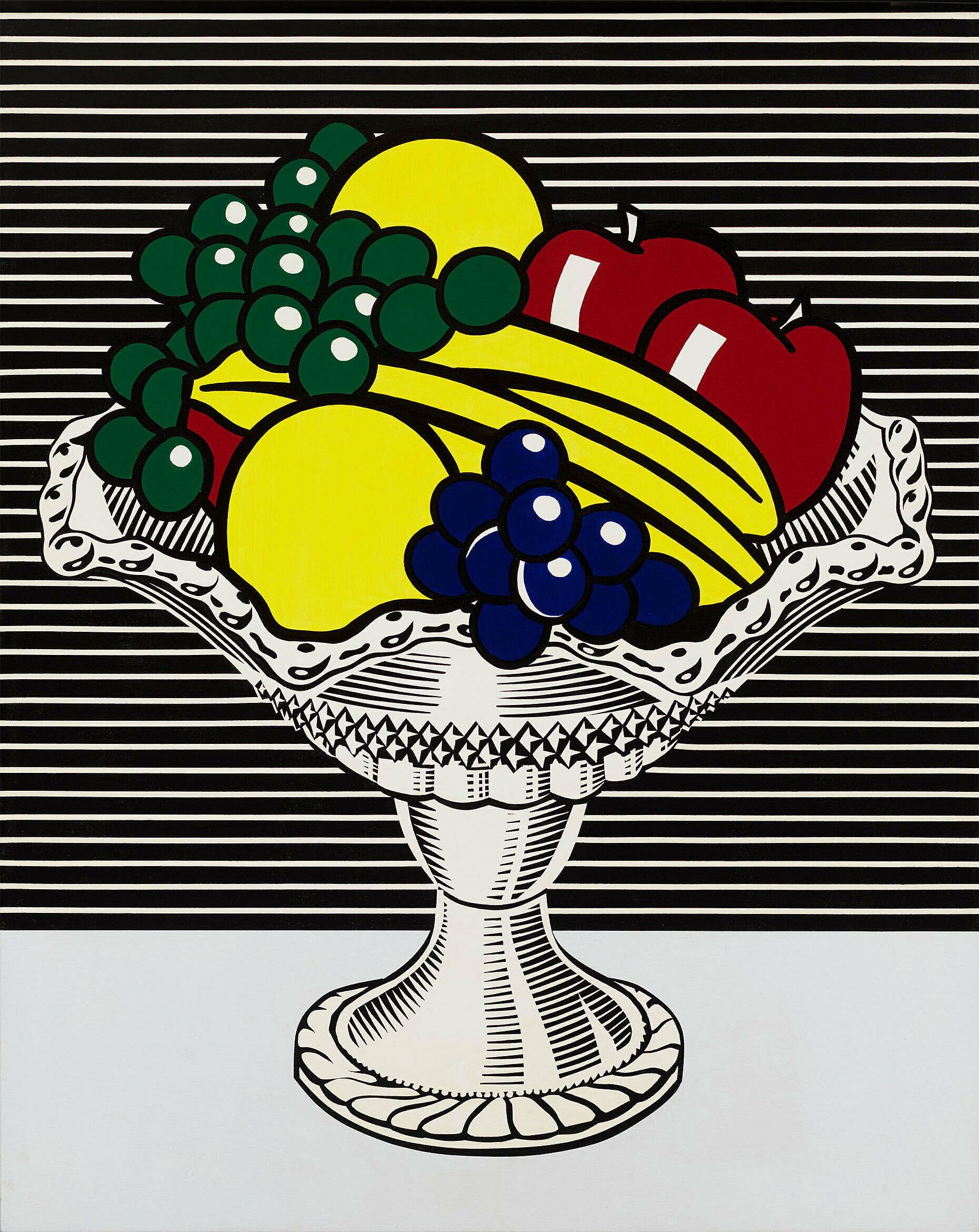
American Legends: From Calder to O'Keeffe
December 22, 2012–June 29, 2014
-
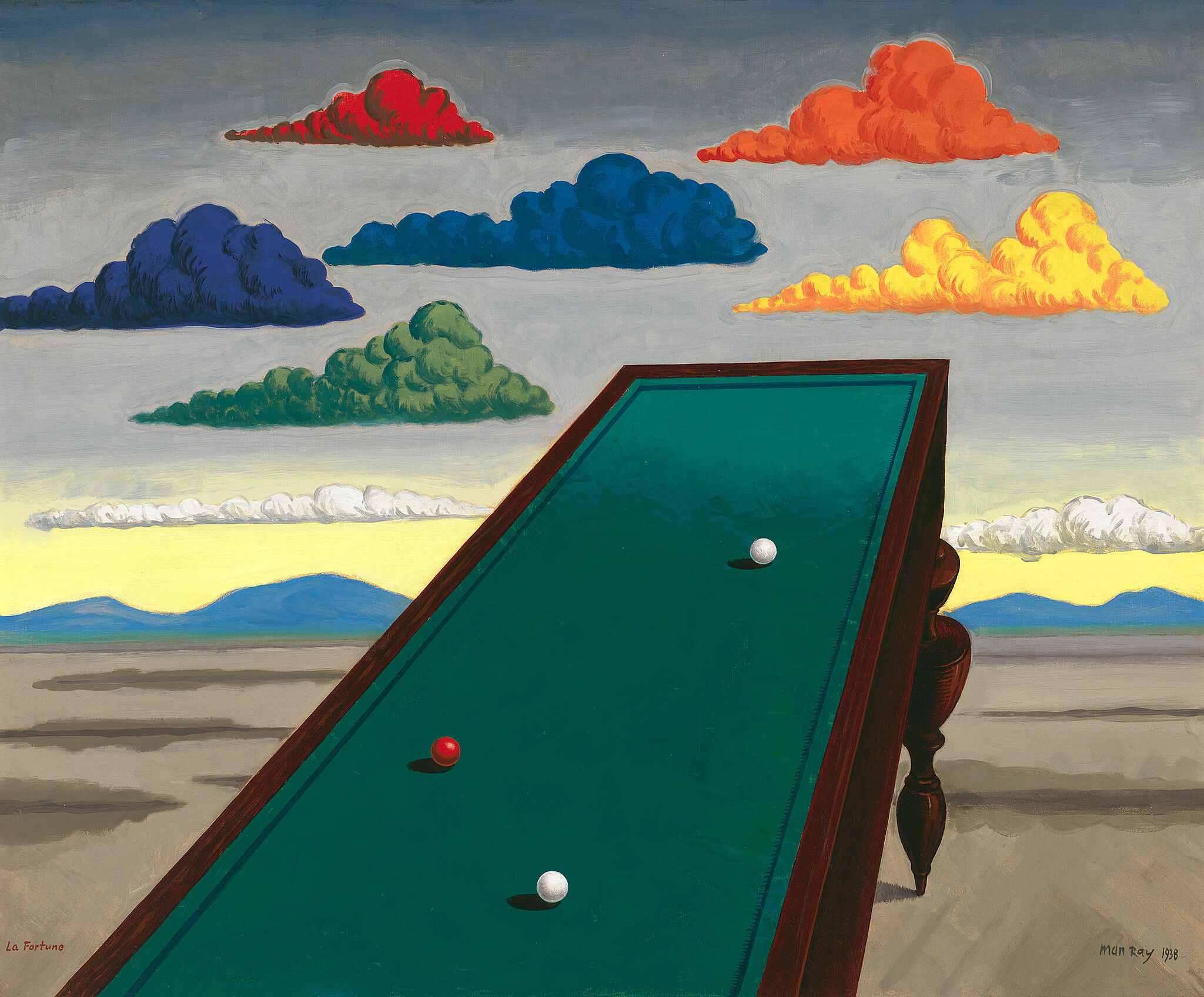
Real/Surreal
Oct 6, 2011–February 12, 2012
-
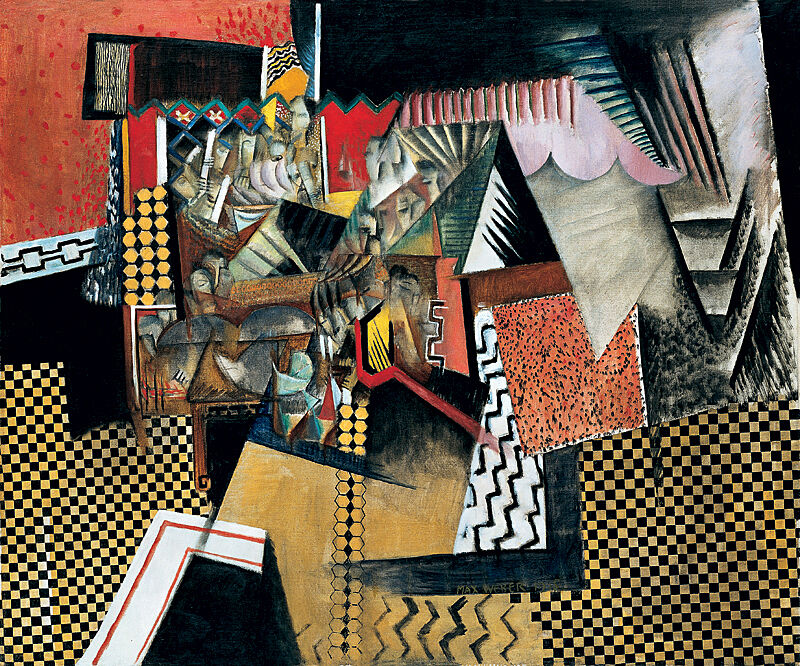
Breaking Footing: The Whitney's Founding Collection
April 28–Sept 18, 2011
-
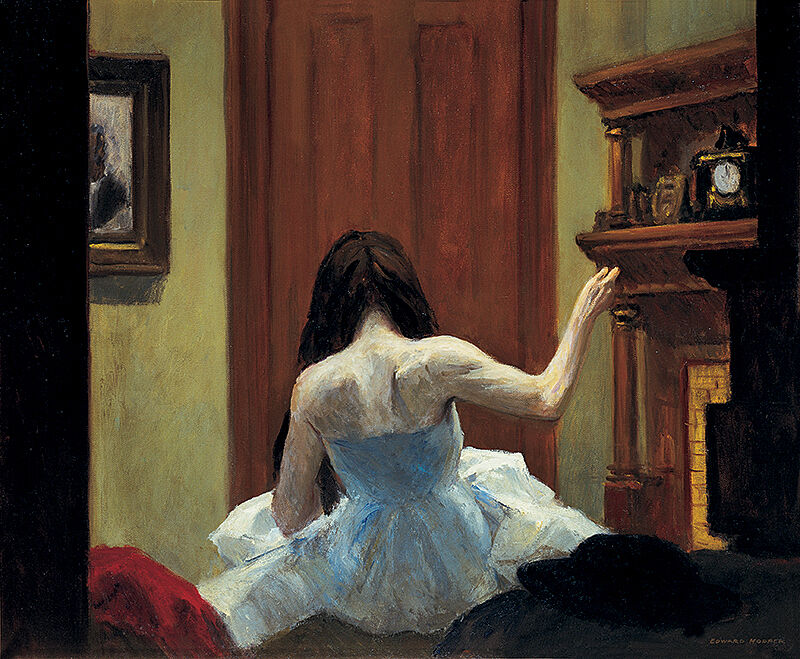
Mod Life: Edward Hopper and His Fourth dimension
Oct 28, 2010–Apr 10, 2011
-
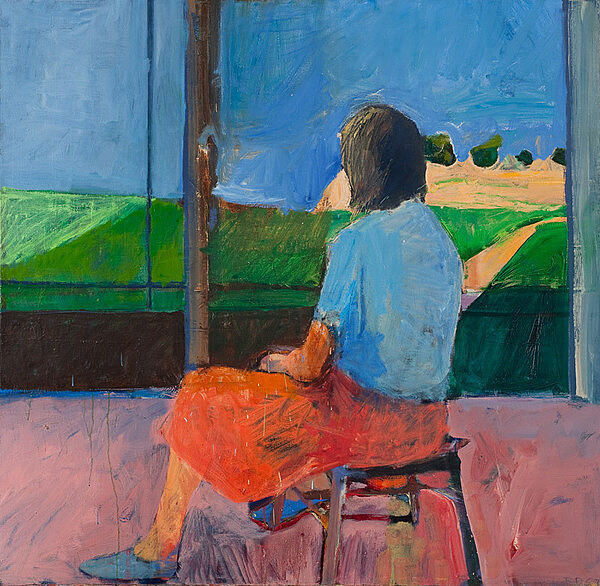
Collecting Biennials
Jan xvi–Nov 28, 2010
-
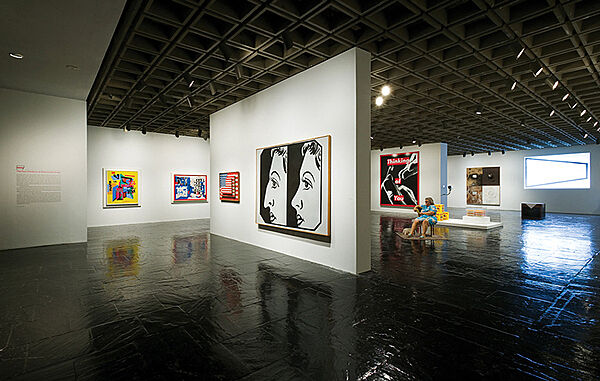
Full Business firm: Views of the Whitney's Collection at 75
June 29–Sept 3, 2006
-
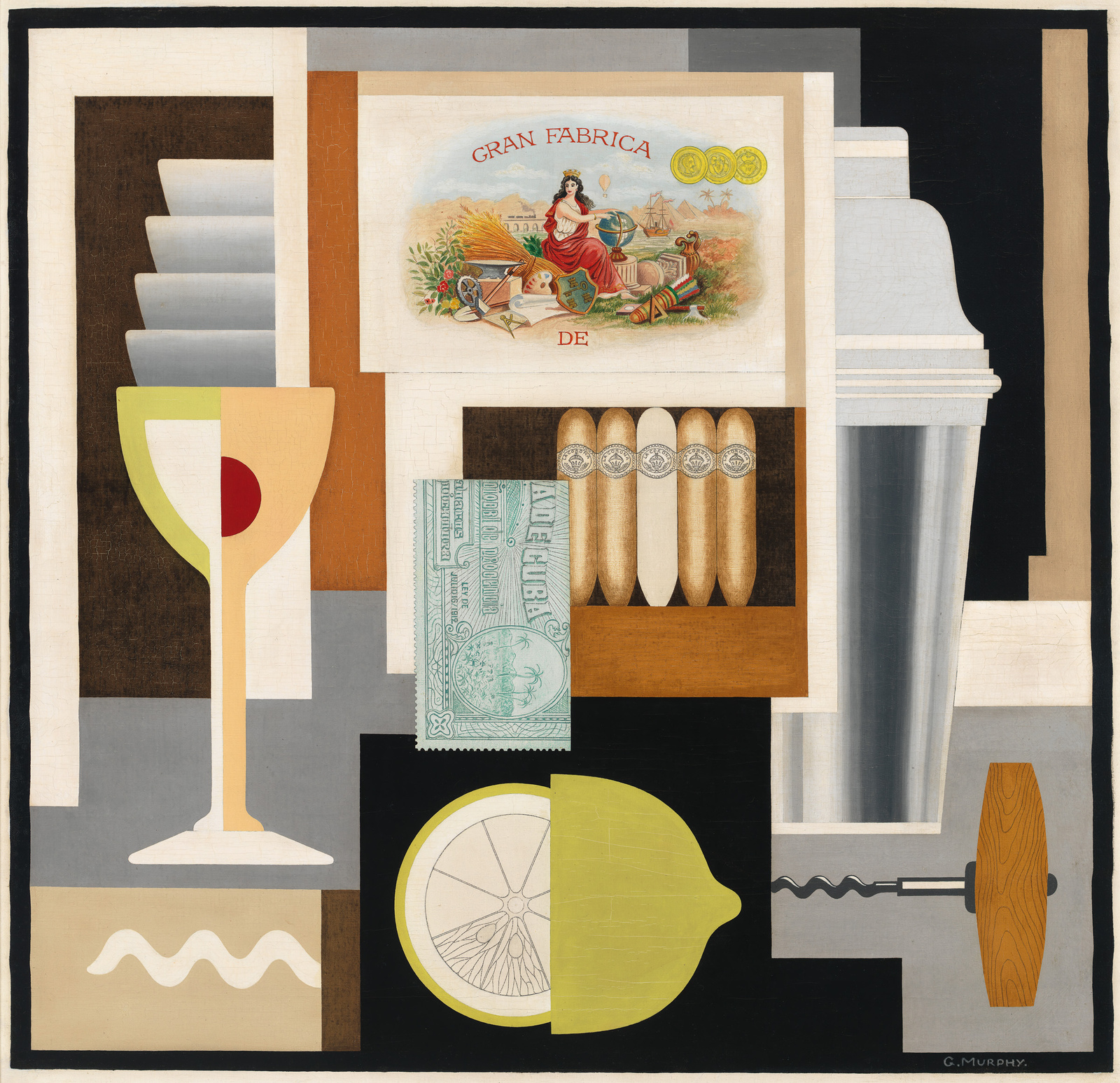
Highlights from the Permanent Collection: From Hopper to Mid-Century
Feb 25, 2000–May xx, 2006
Source: https://whitney.org/collection/works/46345